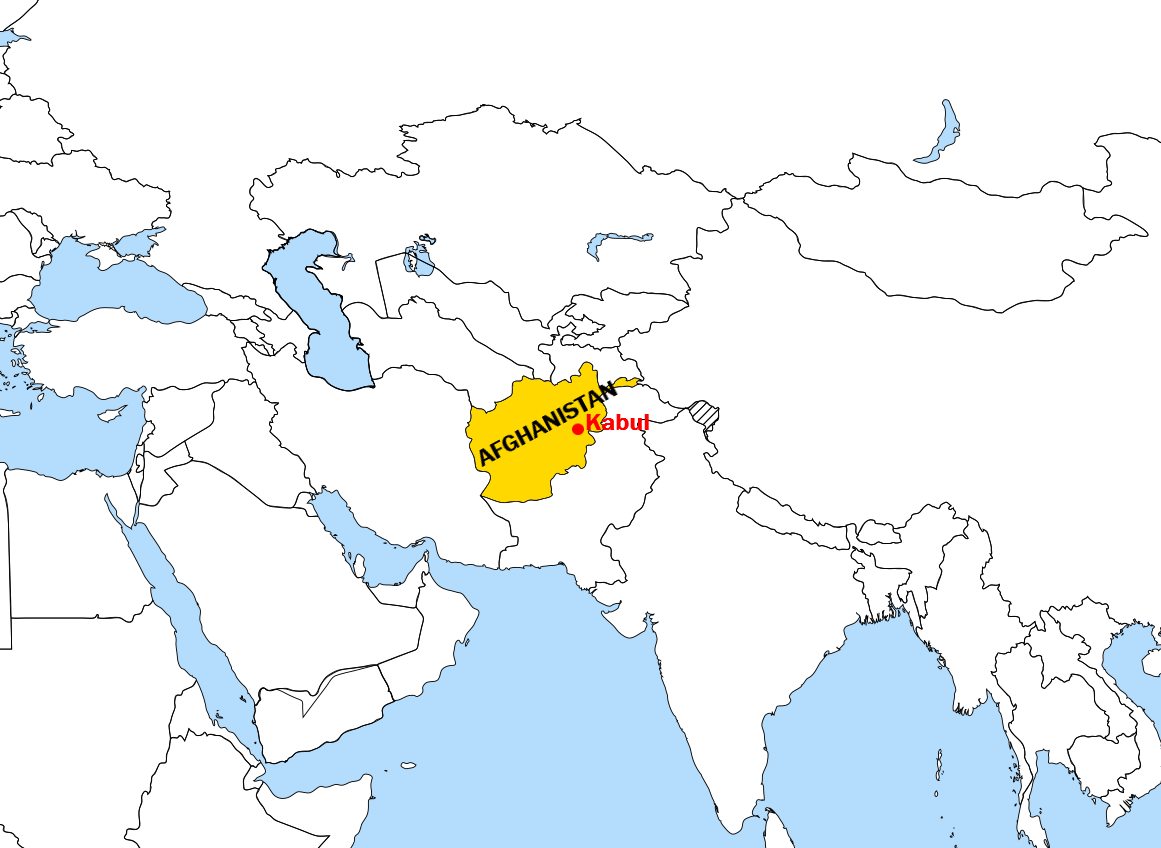|
Nasrid Dynasty (Sistan)
The Nasrid dynasty, also referred to as the ''Later Saffarids of Seistan'' or the ''Maliks of Nimruz'', was an Iranian Sunni dynasty that ruled Sistan in the power vacuum left by the collapse of the Ghaznavid Empire and until the Mongol invasion of Central Asia. The Nasrids were a branch of the Saffarid dynasty, and the establishment of the Nasrid Kingdom at Nimruz in 1068 until its dissolution in 1225 represents a transient resurgence of Saffarid rule in Sistan. The kingdom was established by Tadj al-Din I Abu l-Fadl Nasr who was the Malik of Sistan under the Ghaznavids. Nasrid maliks ruled intermittently as sovereigns or vassals of larger neighboring powers, including the Seljuks, the Ghurids, and the Khwarezmians. After the dissolution of the kingdom by Inaltigin Khwarazmi in the wake of the Mongol invasion, the region was ruled by a third dynasty of Saffarids, the Mihrabanids. Nasrid maliks Genealogy of Nasrids See also *Saffarids *Mihrabanids *Ira ... [...More Info...] [...Related Items...] OR: [Wikipedia] [Google] [Baidu] |
Middle Ages
In the history of Europe, the Middle Ages or medieval period lasted approximately from the 5th to the late 15th centuries, similarly to the post-classical period of global history. It began with the fall of the Western Roman Empire and transitioned into the Renaissance and the Age of Discovery. The Middle Ages is the middle period of the three traditional divisions of Western history: classical antiquity, the medieval period, and the modern period. The medieval period is itself subdivided into the Early, High, and Late Middle Ages. Population decline, counterurbanisation, the collapse of centralised authority, invasions, and mass migrations of tribes, which had begun in late antiquity, continued into the Early Middle Ages. The large-scale movements of the Migration Period, including various Germanic peoples, formed new kingdoms in what remained of the Western Roman Empire. In the 7th century, North Africa and the Middle East—once part of the Byzantine Empire� ... [...More Info...] [...Related Items...] OR: [Wikipedia] [Google] [Baidu] |
Saffarid Dynasty
The Saffarid dynasty () was a Persianate dynasty of eastern Iranian origin that ruled over parts of Persia, Greater Khorasan, and eastern Makran from 861 to 1002. One of the first indigenous Persian dynasties to emerge after the Islamic conquest, the Saffarid dynasty was part of the Iranian Intermezzo. The dynasty's founder was Ya'qub bin Laith as-Saffar, who was born in 840 in a small town called Karnin (Qarnin), which was located east of Zaranj and west of Bost, in what is now Afghanistan. A native of Sistan and a local '' ayyār'', Ya'qub worked as a coppersmith (''ṣaffār'') before becoming a warlord. He seized control of the Sistan region and began conquering most of Iran and Afghanistan, as well as parts of Pakistan, Tajikistan and Uzbekistan. The Saffarids used their capital Zaranj as a base for an aggressive expansion eastward and westward. They first invaded the areas south of the Hindu Kush, and then overthrew the Tahirid dynasty, annexing Khorasan in 873. By th ... [...More Info...] [...Related Items...] OR: [Wikipedia] [Google] [Baidu] |
List Of Sunni Muslim Dynasties
The following is a list of Sunni dynasties. Asia Arabian Peninsula * Ziyadid dynasty (819–1018) * Banu Wajih (926–965) * Sulaymanids (1063–1174) * Mahdids (1159–1174) * Kathiri (Hadhramaut) (1395–1967) * Al-Jabriyun (1417–1521) * Banu Khalid (1669–1796) * Al Qasimi (Ras al Khaymah) (1727–present) *House of Saud (Saudi Arabia) (1744–present) *House of Al-Sabah (Kuwait) (1752–present) * Al Nahyan family (Abu Dhabi) (1761–present) * Al Qasimi (Sharjah) (18th century–present) * Al Mualla (Umm al-Quwain) (1775–present) * Al Khalifa family (Bahrain) (1783–present) *Al Thani (Qatar) (1851–present) Iraq/Iran and Caucasus * Dulafid dynasty (early 9th century–897) * Samanid dynasty (819–999) * Tahirid dynasty (821–873) * Saffarid dynasty (861–1003) * Sajids (889–929) * Farighunid (late 9th–early 11th centuries) * Ma'danids (late 9th–11th centuries) * Sallarid (942–979) * Shaddadid dynasty (951–1199) * Rawadid dynasty (955–1116) * Annaz ... [...More Info...] [...Related Items...] OR: [Wikipedia] [Google] [Baidu] |
History Of Afghanistan
The history of Afghanistan covers the development of Afghanistan from ancient times to the establishment of the Emirate of Afghanistan in 1822 and Afghanistan in modern times. This history is largely shared with that of Central Asia, Iran, and the great Indian subcontinent. Human habitation in Afghanistan dates back to the early Middle Paleolithic era, and the country's strategic location along the historic Silk Road has led it to being described, picturesquely, as the ‘roundabout of the ancient world’. The land has historically been home to various different peoples and has witnessed numerous military campaigns, including those by the Persians, Alexander the Great, the Maurya Empire, Arab Muslims, the Mongols,The Mughal Empire the British, the Soviet Union, and most recently by a US-led coalition. The various conquests and periods in both the Indian and Iranian cultural spheres made the area a center for, Buddhism, Hinduism, Zoroastrianism and later Islam throughout ... [...More Info...] [...Related Items...] OR: [Wikipedia] [Google] [Baidu] |
Iranian Intermezzo
The Iranian Intermezzo, also called the Persian Renaissance, was a period in Iranian history marked by the rise to power of the first Iranian Muslim dynasties. Beginning nearly 200 years after the Arab conquest of Iran and lasting until the middle of the 11th century, it is noteworthy since it was an interlude between the decay of Arab power under the Abbasid Caliphate and the rise of Turkic power under the Seljuk Empire, which triggered the Sunni Revival. The Iranian Intermezzo brought an end to Arab hegemony over Iranian lands and revived Iran's national spirit, albeit in conformity with Islam, though there were some non-Muslim movements (e.g., Mardavij) that outright rejected the Islamization of Iran. Although Zoroastrianism continued to decline, the movement did succeed in revitalizing the Persian language, with the most significant Persian literature from this period being the ''Shahnameh'' by Ferdowsi. The Iranian dynasties that took part in this effort were the Tahiri ... [...More Info...] [...Related Items...] OR: [Wikipedia] [Google] [Baidu] |
Saffarids
The Saffarid dynasty () was a Persianate dynasty of eastern Iranian origin that ruled over parts of Persia, Greater Khorasan, and eastern Makran from 861 to 1002. One of the first indigenous Persian dynasties to emerge after the Islamic conquest, the Saffarid dynasty was part of the Iranian Intermezzo. The dynasty's founder was Ya'qub bin Laith as-Saffar, who was born in 840 in a small town called Karnin (Qarnin), which was located east of Zaranj and west of Bost, in what is now Afghanistan. A native of Sistan and a local '' ayyār'', Ya'qub worked as a coppersmith (''ṣaffār'') before becoming a warlord. He seized control of the Sistan region and began conquering most of Iran and Afghanistan, as well as parts of Pakistan, Tajikistan and Uzbekistan. The Saffarids used their capital Zaranj as a base for an aggressive expansion eastward and westward. They first invaded the areas south of the Hindu Kush, and then overthrew the Tahirid dynasty, annexing Khorasan in 873. By ... [...More Info...] [...Related Items...] OR: [Wikipedia] [Google] [Baidu] |
The Nasrid State (Sistan)
''The'' is a grammatical article in English, denoting nouns that are already or about to be mentioned, under discussion, implied or otherwise presumed familiar to listeners, readers, or speakers. It is the definite article in English. ''The'' is the most frequently used word in the English language; studies and analyses of texts have found it to account for seven percent of all printed English-language words. It is derived from gendered articles in Old English which combined in Middle English and now has a single form used with nouns of any gender. The word can be used with both singular and plural nouns, and with a noun that starts with any letter. This is different from many other languages, which have different forms of the definite article for different genders or numbers. Pronunciation In most dialects, "the" is pronounced as (with the voiced dental fricative followed by a schwa) when followed by a consonant sound, and as (homophone of the archaic pronoun ''thee'') ... [...More Info...] [...Related Items...] OR: [Wikipedia] [Google] [Baidu] |
Mihrabanids
The Mihrabanid dynasty (Persian language, Persian: خاندان مهربانیان) was a Persian people, Persian Muslim dynasty that ruled Sistan (or Nimruz) from 1236 until the mid-16th century. It was the third indigenous Muslim dynasty of Sistan, having been preceded by the Saffarid and Nasrids (Sistan), Nasrid dynasties. Overview Most of what is known about the Mihrabanids comes from two sources. The first, the ''Tarikh-i Sistan'', was completed in the mid-14th century by an unknown chronologist and covers the first hundred years of the dynasty's history. The other, the ''Ihya' al-muluk'', was written by the 17th century author Malik Shah Husayn ibn Malik Ghiyath al-Din Muhammad and covers the entire history of the Mihrabanids' rule of Sistan. The Mihrabanids used the title of malik during their rule of Sistan. A malik could inherit the throne or be appointed by the nobles and military commanders. Their capital was generally the city of Zaranj, Shahr-i Sistan. Outside of th ... [...More Info...] [...Related Items...] OR: [Wikipedia] [Google] [Baidu] |
Khwarezmian Empire
The Khwarazmian Empire (), or simply Khwarazm, was a culturally Persianate, Sunni Muslim empire of Turkic '' mamluk'' origin. Khwarazmians ruled large parts of present-day Central Asia, Afghanistan, and Iran from 1077 to 1231; first as vassals of the Seljuk Empire and the Qara Khitai (Western Liao dynasty), and from circa 1190 as independent rulers up until the Mongol conquest in 1219–1221. The date of the founding of the state remains debatable. The dynasty that ruled the empire was founded by Anush Tigin (also known as Gharachai), initially a Turkic slave of the rulers of Gharchistan, later a Mamluk in the service of the Seljuks. However, it was Ala ad-Din Atsiz (r. 1127–1156), descendant of Anush Tigin, who achieved Khwarazm's independence from its neighbors. The Khwarazmian Empire eventually became the most powerful state in the lands around Persia, defeating the Seljuk Empire and the Ghurid Empire, and even threatening the Abbasid Caliphate. It is estimated t ... [...More Info...] [...Related Items...] OR: [Wikipedia] [Google] [Baidu] |
Ghurids
The Ghurid dynasty (also spelled Ghorids; ; self-designation: , ''Šansabānī'') was a Persianate dynasty of eastern Iranian Tajik origin, which ruled from the 8th-century in the region of Ghor, and became an Empire from 1175 to 1215. The Ghurids were centered in the hills of the Ghor region in the present-day central Afghanistan, where they initially started out as local chiefs. They gradually converted to Sunni Islam after the conquest of Ghor by the Ghaznavid ruler Mahmud of Ghazni in 1011. The Ghurids eventually overran the Ghaznavids when Muhammad of Ghor seized Lahore and expelled the Ghaznavids from their last stronghold. The Ghurids initially ruled as vassals of the Ghaznavids and later of the Seljuks. However, during the early twelfth century the long-standing rivalry between the Seljuks and Ghaznavids created a power vacuum in eastern Afghanistan and Panjab which the Ghurids took advantage of and began their territorial expansion. Ala al-Din Husayn ended t ... [...More Info...] [...Related Items...] OR: [Wikipedia] [Google] [Baidu] |




